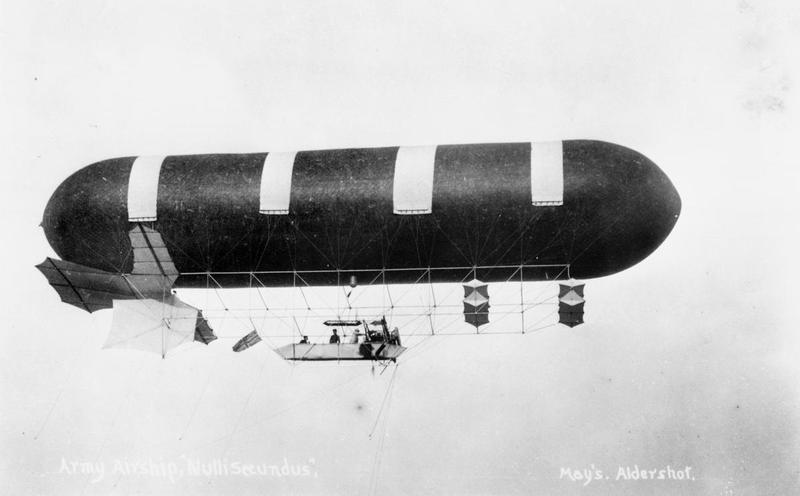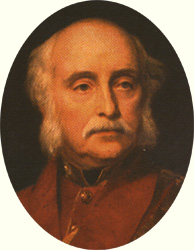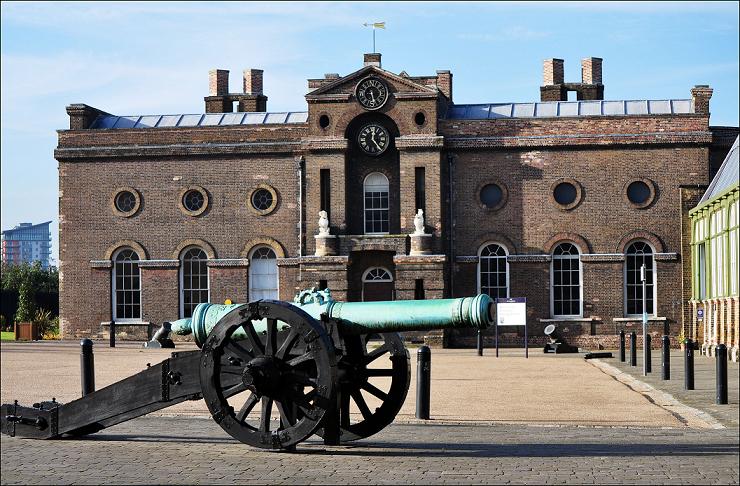|
John Capper
Major General Sir John Edward Capper, (7 December 1861 − 24 May 1955) was a senior officer of the British Army during the late nineteenth and early twentieth century who served on the North-West Frontier of British India, in South Africa and during the First World War, where he was instrumental in the development of the tank. He was the older brother of Major General Thompson Capper, who was killed in action at the Battle of Loos in late 1915. An experienced engineer, Capper was involved in numerous building projects during his years in India and pioneered the development of airships in Britain. He helped establish and command several military training establishments in Britain, was involved in large-scale military planning during 1918 and 1919 and was pivotal in establishing the tank as an important feature of the British Army. Although Capper was sometimes described as pompous and possessing poor communication skills, earning the nickname "Stone Age" for his attitude tow ... [...More Info...] [...Related Items...] OR: [Wikipedia] [Google] [Baidu] [Amazon] |
Samuel Franklin Cody
Samuel Franklin Cowdery (later known as Samuel Franklin Cody; 6 March 1867 – 7 August 1913, born Davenport, Iowa, USA)) was a Wild West showman and early pioneer of manned flight. He is most famous for his work on the large kites known as ''Cody War-Kites'', that were used by the British before World War I as a smaller alternative to balloons for artillery spotting. He was also the first man to fly an aeroplane built in Britain, on 17 October 1908. A flamboyant showman, he was often confused with Buffalo Bill Cody, whose surname he took when young. Early life Cody's early life is difficult to separate from his own stories told later in life, but he was born Samuel Franklin Cowdery in 1867, in Davenport, Iowa, where he attended school until the age of 12. Not much is known about his life at this time, although he claimed that during his youth he had lived the typical life of a cowboy. He learned how to ride and train horses, shoot and use a lasso. He later claimed to h ... [...More Info...] [...Related Items...] OR: [Wikipedia] [Google] [Baidu] [Amazon] |
William Capper
Colonel William Baume Capper CVO (6 February 1856 – 15 January 1934) was a British Army officer who became Commandant of the Royal Military College Sandhurst. Military career Capper was born on 6 February 1856 at Newbridge Hill, Bath, Somerset,Published by Association of Cricket Statisticians and Historians. his father William Copeland Capper having been in the Bengal Civil Service. Educated at Haileybury, Capper was commissioned into the 85th Regiment of Foot in 1876 and subsequently played cricket for Shropshire in 1882-83 and for Staffordshire. He became adjutant of the King's Shropshire Light Infantry in 1886. He served in the Second Anglo-Afghan War, in the 1882 Anglo-Egyptian War and in the Mahdist War in Sudan from 1884 to 1885. He was director of military education in India in December 1902. He was commandant of the Royal Military College, Sandhurst from January 1907 to 1911 and then served in World War I, following which he was made a CVO in 1919. Family In ... [...More Info...] [...Related Items...] OR: [Wikipedia] [Google] [Baidu] [Amazon] |
Major (United Kingdom)
Major (Maj) is a military rank which is used by both the British Army and Royal Marines. The rank is superior to Captain (British Army and Royal Marines), captain and subordinate to Lieutenant colonel (United Kingdom), lieutenant colonel. The insignia for a major is a Crown (headgear), crown. The equivalent rank in the Royal Navy is Lieutenant commander (Royal Navy), lieutenant commander, and squadron leader in the Royal Air Force. History By the time of the Napoleonic Wars, Napoleonic wars, an infantry battalion usually had two majors, designated the "senior major" and the "junior major". The senior major effectively acted as second-in-command and the majors often commanded detachments of two or more company (military unit), companies split from the main body. The second-in-command of a battalion or regiment is still a major. File:British-Army-Maj(1856-1867)-Collar Insignia.svg, 1856 to 1867 major's collar rank insignia File:British-Army-Maj(1867-1880)-Collar Insignia.svg, 18 ... [...More Info...] [...Related Items...] OR: [Wikipedia] [Google] [Baidu] [Amazon] |
Khyber Pass
The Khyber Pass (Urdu: درۂ خیبر; ) is a mountain pass in the Khyber Pakhtunkhwa province of Pakistan, on the border with the Nangarhar Province of Afghanistan. It connects the town of Landi Kotal to the Valley of Peshawar at Jamrud by traversing part of the White Mountains, Afghanistan, White Mountains. Since it was part of the ancient Silk Road, it has been a vital trade route between Central Asia and the Indian subcontinent and a Military strategy, strategic military choke point for various states that controlled it. The Khyber Pass is considered one of the most famous mountain passes in the world. Geography Following Asian Highway 1 (AH1), the summit of the pass at the town of Landi Kotal is inside Pakistan, descending into the Valley of Peshawar at Jamrud, about from the Afghan border by traversing part of the Spin Ghar mountains. History Historical invasions of the Indian subcontinent have been predominantly through the Khyber Pass, such as those of Cyrus the ... [...More Info...] [...Related Items...] OR: [Wikipedia] [Google] [Baidu] [Amazon] |
Captain (British Army And Royal Marines)
Captain (Capt) is a junior officer rank of the British Army and Royal Marines and in both services it ranks above Lieutenant (British Army and Royal Marines), lieutenant and below Major (United Kingdom), major with a NATO ranking code of OF-2. The rank is equivalent to a Lieutenant (British Army and Royal Marines), lieutenant in the Royal Navy and to a flight lieutenant in the Royal Air Force. The rank of Captain (Royal Navy), captain in the Royal Navy is considerably more senior (equivalent to the Army/RM rank of colonel) and the two ranks should not be confused. In the 21st-century British Army, captains are often appointed to be second-in-command (2IC) of a Company (military unit), company or equivalent sized unit of up to 120 soldiers. History A rank of second captain existed in the Ordnance at the time of the Battle of Waterloo. From 1 April 1918 to 31 July 1919, the Royal Air Force maintained the junior officer rank of captain. RAF captains had a rank insignia based on ... [...More Info...] [...Related Items...] OR: [Wikipedia] [Google] [Baidu] [Amazon] |
Burma
Myanmar, officially the Republic of the Union of Myanmar; and also referred to as Burma (the official English name until 1989), is a country in northwest Southeast Asia. It is the largest country by area in Mainland Southeast Asia and has a population of about 55 million. It is bordered by India and Bangladesh to its northwest, China to its northeast, Laos and Thailand to its east and southeast, and the Andaman Sea and the Bay of Bengal to its south and southwest. The country's capital city is Naypyidaw, and its largest city is Yangon (formerly Rangoon). Early civilisations in the area included the Tibeto-Burman-speaking Pyu city-states in Upper Myanmar and the Mon kingdoms in Lower Myanmar. In the 9th century, the Bamar people entered the upper Irrawaddy valley, and following the establishment of the Pagan Kingdom in the 1050s, the Burmese language and culture and Theravada Buddhism slowly became dominant in the country. The Pagan Kingdom fell to Mongol invas ... [...More Info...] [...Related Items...] OR: [Wikipedia] [Google] [Baidu] [Amazon] |
Royal School Of Military Engineering
The Royal School of Military Engineering (RSME) Group provides a wide range of training for the British Army and Defence. This includes; Combat Engineers, Carpenters, Chartered Engineers, Musicians, Band Masters, Sniffer Dogs, Veterinary Technicians, Ammunition Experts, Bomb Disposal Operators, and Counter Chemical Warfare experts, as well as Command and Leadership. History 19th century The Peninsular War (1808–14) revealed deficiencies in the training and knowledge of officers and men in the conduct of siege operations and bridging. During this war low ranking Royal Engineers officers carried out large scale operations. They had under their command working parties of two or three battalions of infantry, two or three thousand men, who knew nothing in the art of siegeworks. Royal Engineers officers had to demonstrate the simplest tasks to the soldiers often while under enemy fire. Several officers were lost and could not be replaced and a better system of training for siege ope ... [...More Info...] [...Related Items...] OR: [Wikipedia] [Google] [Baidu] [Amazon] |
Royal Military Academy, Woolwich
The Royal Military Academy (RMA) at Woolwich, in south-east London, was a British Army military academy for the training of Officer (armed forces), commissioned officers of the Royal Artillery and Royal Engineers. It later also trained officers of the Royal Corps of Signals and other technical corps. RMA Woolwich was commonly known as "The Shop" because its first building was a converted workshop of the Royal Arsenal, Woolwich Arsenal. History Origins in the Royal Arsenal An attempt had been made by the Board of Ordnance in 1720 to set up an academy within its Arsenal (then known as the Warren) to provide training and education for prospective officers of its new Royal Regiment of Artillery, Regiment of Artillery and Corps of Royal Engineers, Corps of Engineers (both of which had been established there in 1716). A new building was being constructed in readiness for the Academy and funds had been secured, seemingly, through investment in the South Sea Company; but the latter's col ... [...More Info...] [...Related Items...] OR: [Wikipedia] [Google] [Baidu] [Amazon] |
Wellington College, Berkshire
Wellington College is a co-educational public school providing education for boarding and day pupils in the village of Crowthorne, in Berkshire, in the United Kingdom. Wellington is a registered charity and currently educates roughly 1,100 pupils aged between 13 and 18. The college was built as a national monument to the military victory against Napoleon, and the political service as British Prime Minister, of the first Duke of Wellington, in whose honour it is named. It was established by Royal Charter in 1853. Queen Victoria laid the foundation stone in 1856, and inaugurated the school's public opening on 29 January 1859. Many former Wellington pupils fought in the trenches during the First World War, with a large number volunteering for military service immediately after leaving school. In all, 707 Wellington old boys lost their lives in the conflict. A further 501 former pupils were killed in action in the Second World War. The school is a member of the Rugby Group of ... [...More Info...] [...Related Items...] OR: [Wikipedia] [Google] [Baidu] [Amazon] |
England
England is a Countries of the United Kingdom, country that is part of the United Kingdom. It is located on the island of Great Britain, of which it covers about 62%, and List of islands of England, more than 100 smaller adjacent islands. It shares Anglo-Scottish border, a land border with Scotland to the north and England–Wales border, another land border with Wales to the west, and is otherwise surrounded by the North Sea to the east, the English Channel to the south, the Celtic Sea to the south-west, and the Irish Sea to the west. Continental Europe lies to the south-east, and Ireland to the west. At the 2021 United Kingdom census, 2021 census, the population was 56,490,048. London is both List of urban areas in the United Kingdom, the largest city and the Capital city, capital. The area now called England was first inhabited by modern humans during the Upper Paleolithic. It takes its name from the Angles (tribe), Angles, a Germanic peoples, Germanic tribe who settled du ... [...More Info...] [...Related Items...] OR: [Wikipedia] [Google] [Baidu] [Amazon] |
Airships
An airship, dirigible balloon or dirigible is a type of aerostat (lighter-than-air) aircraft that can navigate through the air flying under its own power. Aerostats use buoyancy from a lifting gas that is less dense than the surrounding air to achieve the lift needed to stay airborne. In early dirigibles, the lifting gas used was hydrogen, due to its high lifting capacity and ready availability, but the inherent flammability led to several fatal accidents that rendered hydrogen airships obsolete. The alternative lifting gas, helium gas is not flammable, but is rare and relatively expensive. Significant amounts were first discovered in the United States and for a while helium was only available for airship usage in North America. Most airships built since the 1960s have used helium, though some have used hot air. The envelope of an airship may form the gasbag, or it may contain a number of gas-filled cells. An airship also has engines, crew, and optionally also payload acc ... [...More Info...] [...Related Items...] OR: [Wikipedia] [Google] [Baidu] [Amazon] |
Battle Of Loos
The Battle of Loos took place from 1915 in France on the Western Front (World War I), Western Front, during the First World War. It was the biggest British attack of 1915, the first time that the British used Chemical weapons in World War I, gas as a weapon and the first mass engagement of Kitchener's Army, New Army divisions. The French and British tried to break through the German defences in County of Artois, Artois in the north and Champagne (historical province), Champagne at the south end of the Noyon Salient to restore a war of movement. Despite improved methods, more ammunition, better equipment and gas, the Franco–British attacks were contained by the Germans, except for local losses of ground. The British gas attack failed sufficiently to neutralise the defenders and the artillery bombardment was too short to destroy barbed wire and machine-gun nests. German defensive fortifications and tactics could not be overcome by the British who were still assembling a mass a ... [...More Info...] [...Related Items...] OR: [Wikipedia] [Google] [Baidu] [Amazon] |






